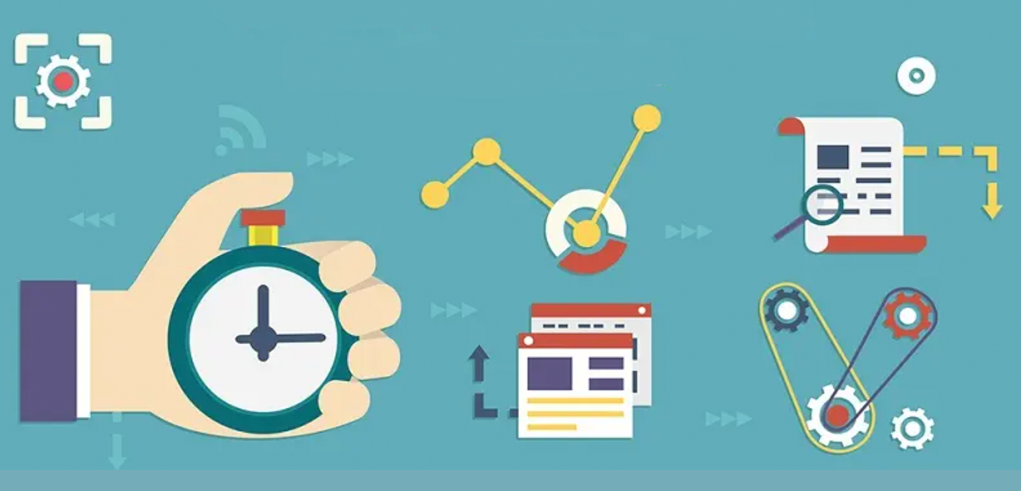Sales are one baffling field. It is like an alluring chasm that appears interesting, and you grip onto it, but the harder you grip, the deeper you swamp. One minute you exude confidence, and the next, you lay down, hitting your head, questioning everything you know.
Thus we can all conclude that the world of sales could be intense. It takes giant leaps every minute or so and turns over everybody involved. This is the primary reason why we at SaaSworthy spun together every statistical data related to sales in this article. This data will supposedly enlighten your mind regarding puzzling realms of sales by giving you bits of wisdom on every sale category. So behold the garland of sale wisdom that we weaved here.
Table of Contents
Statistics on Sales Email

Targeting customers via personalized sales email tends to arouse audience interest in your product or service. All you need to do is ensure an engaging subject line, a personalized caption, and content that appears relevant to them.
- The new customer acquisition suggests that sales emails tend to be 40 times more effective than both Twitter and Facebook.
- 89 percent of the total marketers deem email to be their primary source for lead generation.
- A survey with prospects reflected that 8 out of 10 marketing prospects prefer to contact sales reps via email over any other social platform.
Statistics on Sales Prospecting

Sales prospecting is one of the most important and twisted techniques of the sales world. It is a process where the sales reps make outbound contacts to prospective customers in an attempt to turn them into buyers. Additionally, it also involves reaching out to leads that have gone dormant over time. Overall, it is a complex sales strategy, and here is a list of statistics related to it:
- Prospecting sales emails have an opening of 24 percent.
- About 50 percent of your leads do not align with your product line.
- Sales prospecting is deemed to be the most challenging aspect of the entire sales procedure by more than 40 percent of the people. It is followed by sales closing with a percentage score of 30 and sales qualifying with a percentage score of 22.
- The various stages of prospecting reflect different statistics:
- The awareness stage is the foremost stage where buyers learn about the product. Only 19 percent of the buyers actually contact the sales rep during this period.
- The consideration stage is the stage where the buyers shortlist their options. 60 percent of the buyers connect to a salesperson during this period.
- The final stage is the decision stage. 20 percent of the buyers try to connect with the sales rep during this stage.
- A HubSpot research strongly mirrored the fact that generating new opps is imperative for business success. The research revealed that 72 percent of companies with less than 50 new opps suffered a massive loss in their revenues. The figures were 15 percent companies with new opps ranging between 51-100 and 4 percent for the companies who had more than 100 opps.
- You will need to make about 18 calls to actually connect with a lead.
Statistics on Remote Sales

Remote sales is a type of sale where buyer and seller converse over a product from two different geographical locations.
- 94 percent of the employees, when surveyed, reported that productivity rates had remained the same or spiked by 27 percent during the work from home arrangement since the pandemic.
- Upwork data suggests that 41.8 percent of Americans work remotely. 36.2 million Americans are expected to work remotely by 2022.
- A PayScale research revealed that remote employees earn 8.3 percent more than non-remote employees of the same job title and qualifications.
Statistics on Sales Follow-Up

Sales follow-up is a sales strategy where sellers try to boost their sales by targeting existing customers and extracting referrals to new customers through them.
- 48 percent of the sales rep never make a follow-up attempt after their lead’s denial. However, it is recorded that 68 percent of the people say yes after four NOs.
- 70 percent of the sales rep give up after just one email. However, the studies suggest that there is a 25 percent chance of hearing back from your leads if you remain persistent with the emails.
- 44 percent of the sales rep forfeits after just one follow-up call, whereas successful sales require at least 5 follow-up calls. At most, 80 percent of the sales are made after 5 follow-up calls.
- 57 percent of the customers reported that they would take an interest in the product if the sales rep does not pester them during the follow-up procedure.
- 75 percent of the people expect 2-4 business calls before finally giving up whereas 12 percent of the people do not mind receiving calls at all.
Statistics on Sales Call

A sales call is the official discussion between a sales rep and a prospective buyer in an attempt to trigger a buying action.
- 63 percent of the sales leaders claim virtual sales meetings are equally or even more effective than face-to-face meetings.
- You are 35 percent likely to seal a deal if you use collaborative words like ‘we’ instead of ‘I’ in your sentences.
- 41.2 percent of the sales rep owe all their success rates to their phones.
- Your greeting sentences have a great impact on the entire course of your meeting. It is observed that starting with ‘How are you’ is 3.4 times more likely to book a meeting than sentences like ‘Is it a bad time?’
- Research including 100,000 sales calls revealed that successful sales reps spent 54 percent of the entire call duration talking while unsuccessful reps talk only for 42 percent of the call.
Statistics on Sales Productivity

Sales productivity is the ratio of sales output and sales input. In other words, it means maximizing your sales while expending fewer resources and time.
- Only 24.3 percent of the sales rep exceeded their sales targets last year.
- HubSpot research observed that more than half of the sales reps rely on their peers for effective sales tips, while 44 percent looked up to their managers, 35 percent relied on training, and 24 percent depending on the media.
- Only 7 percent of the total successful sales rep reported pitching offers, while 19 percent of average sales reps reported pitching.
- Almost 6 out of 10 sales reps claimed that once they figure out a strategy that works for them then they become rigid to that strategy.
- An average sales rep spend their day:
- One-third of the day talking to prospects
- 17 percent of the day researching leads
- 21 percent of the day writing emails
- 12 percent of the day scheduling meetings and calls
- And the remaining 12 percent attending internal meetings
Statistics on Sales Career

- Only 39 percent of the total sales rep actually intended to take up sales as their career.
- A typical AE takes around 5 months to ramp and 2.7 years on the job.
- 17 percent of the sales rep never went to college, while one in four sales reps did their majors in business.
Statistics on Social Selling

Social selling means fostering a relationship with your customers to extract lucrative deals.
- Implementing social selling tools can amp up win rates by 5 percent and deal size by 35 percent, respectively.
- 4 out of 10 reps reported that using social media made their sales deal easier.
- Social selling influences half of the total revenues in 14 industries.
Statistics on Sales Referral

Referral sales is a sales strategy where sellers leverage their bond with current customers by asking them to refer their product to new prospects.
- 65 percent of the new deals bud from referrals
- 83 percent of the US buyers are influenced by the social media posts of their peers
- 92 percent of the customers trust references by their peers more than sales reps
- Companies with referral rates have a 70 percent higher conversion rate
Statistics on Sales Technology

Sales technology is a set of tools and resources that helps to escalate sales.
- The sales enabling tool has a usage rate of 567 percent.
- Sales organizations are investing more in sales resources than they were two years ago.
Statistics on Inside Sales

- Personalized emails prove to be an asset to inside sales. Emails with a personalized touch to it have an open rate of 5.9 percent and a click rate of 0.2 percent.
- Inside sales reps spend only 33 percent of their time selling.
- Inside sales prove to be more cost-effective than outside sales. An inside sales call arrangement costs 50 dollars, while the outside sales call arrangement costs 308 dollars.
Conclusion
These numbers may not clear everything related to sales, but they sure do illuminate some dark spots of the sales world. One of the most essential things is that these statistics can help you and your team hone your sales strategy, notch up ideas and most of all help you bring about effective changes in your strategy and propel your organization towards growth. Check out our article on E-commerce strategies that could drive sales for your business here!






